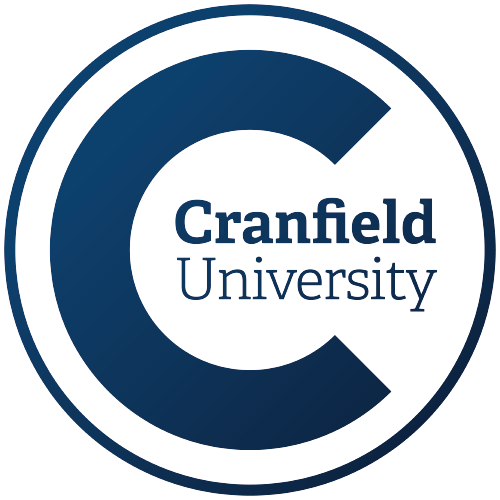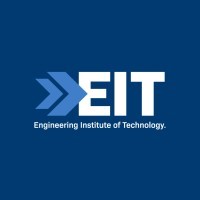📖Program Curriculum
Course modules
Compulsory modules
All the modules in the following list need to be taken as part of this course.
Thermal Energy Systems
Aim
This module provides an understanding of the fundamentals of operation, configuration and characteristics of thermal energy systems for power generation.
Syllabus
Energy Overview: world electricity demand and supply. Low carbon energy fundamentals.
Power plant fundamentals: thermodynamic principles. Fuels. Combustion, gasification approaches.
Conventional tower plants, coal fired power plants, fuel handling, steam generation, Rankine power generation cycles.
Gas turbine and combined-cycle power plants: gas turbine engines and performance. Gas turbine cycles. Combined-cycle power plants.
Diesel- and gas-engine power plants: diesel engines. Fuels. Emission control. Heat recovery systems.
Nuclear power generation: basic nuclear physical processes (fission and fusion). Nuclear fuels. Types of reactors. Safety considerations in the nuclear industry. Developments in nuclear fusion. Decommissioning problems of nuclear sites. Nuclear waste disposal systems.
Non-conventional power generation: solar thermal power, solar thermal enhanced designs and new materials, geothermal power, energy from waste, thermoelectric and thermionic power, ocean thermal energy conversion.
Advanced power plants: Innovative SCO2 cycles to operate at higher temperatures, Hybrid schemes.
Intended learning outcomes
On successful completion of this module you should be able to:
Debate issues related to the performance of conventional power-generation plants and identify appropriate routes for improving energy-utilisation efficiency.
Critically evaluate the fundamentals and laws governing energy conversion, various fuels and their characteristics and the energy requirement of thermal energy systems by modelling the underlying power cycles.
Critique the innovations in modern energy systems related to gas turbines, combined cycle and nuclear based power.
Review critically technologies employed for non conventional thermal power generation systems (Geo, solar, ocean thermal) and their applications.
Assess the importance of thermal energy systems in achieving energy security and low carbon economy.
Process Design and Simulation
Module Leader
Dr Dawid Hanak
Aim
Process design, simulation and modelling are industrially-relevant tools to assess the feasibility of complex engineering processes and innovative process concepts that aim at tackling global challenges. The tools taught in this module enable process engineers to design and assess the feasibility and optimisation of process plant designs before the actual process plant is build. These tools are widely applied in the industry to assess several process variants and to select the most efficient option. This module aims to introduce you to the modern techniques and computer-aided engineering tools for the design, simulation and optimisation of sustainable process engineering systems. It comprises several hands-on case studies (microprojects) that enable you to develop relevant process design, simulation and optimisation competencies via hands-on experience using commercial software. You will also work on an industrially relevant case study that will take you through the entire process design cycle.
Syllabus
Process Design
Overview: Conceptual process design. Process flow-sheeting.
Process synthesis: Overview of a process system. Recycle structure of the flowsheet. Design of reaction and separation systems.
Process integration: Concepts of process integration for heat exchanger network design.
Process Modelling, Simulation and Optimisation
Modelling and simulation: Concepts of process modelling. General concepts of simulation. Introduction to steady and dynamic process simulation. Introduction to commercial simulation software packages (i.e. Aspen Plus/Hysys, Aveva Process Simulation) and open-source codes (DWSIM) for process flow-sheeting, design and analysis.
Process optimisation techniques: Principles of optimisation.
Case Studies (PC Lab and Demonstration Sessions)
Process design, simulation and optimisation case studies based on industrial or research projects will be carried out using AspenOne, Aveva, and DWSIM.
Intended learning outcomes
On successful completion of this module you should be able to:
Formulate strategies to carry out a process design and critically appraise the techniques and major commercial simulation tools for steady and dynamic process simulation,
Apply competently the basic principles of process optimisation,
Design and analyse the performance of a process plant using simulation or optimisation tools.
Computational Fluid Dynamics for Industrial Processes
Module Leader
Dr Patrick Verdin
Aim
This module introduces you to the CFD techniques and tools for modelling, simulating and analysing practical engineering problems with hands on experience using commercial software packages used in industry.
Syllabus
Introduction to CFD & thermo-fluids: introduction to the physics of thermo-fluids, governing equations (continuity, momentum, energy and species conservation) and state of the art computational fluid dynamics including modelling, grid generation, simulation, and high performance computing. Case study of industrial problems related to energy, process systems, offshore engineering, and the physical processes where CFD can be used,
Computational engineering exercise: specification for a CFD simulation, requirements for accurate analysis and validation for multi scale problems, introduction to turbulence & practical applications of turbulence models, introduction to turbulence and turbulent flows, traditional turbulence modelling,
Advanced turbulence modelling: introduction to Reynolds-averaged Navier Stokes (RANS) simulations and large-eddy simulation (LES),
Practical sessions: fluid process problems are solved employing the widely-used industrial flow solver software FLUENT. Lectures are followed by practical sessions on single/multiphase flows, heat transfer, to set up and simulate a problem incrementally. Practical sessions cover the entire CFD process including geometric modelling, grid generation, flow solver, analysis, validation and visualisation.
Intended learning outcomes
On successful completion of this module you should be able to:
assemble and evaluate the different components of the CFD process,
explain the governing equations for fluid flows and how to solve them computationally,
compare and contrast various methods for simulating turbulent flows applicable to mechanical and process engineering,
set up simulations and evaluate a practical problem using a commercial CFD package,
design CFD modelling studies for use in industrial design of complex systems.
Industrial Thermal Operations
Module Leader
Dr Kumar Patchigolla
Aim
Heat consumption accounts for a large proportion of greenhouse gas emissions. Industrial and commercial sectors use large quantities of heat in the preparation or treatment of materials used to manufacture goods and to provide services. This module is designed to provide working knowledge and understanding of:
The operating principles of small to medium scale industrial heat production plant,
The recovery of heat from production processes for conversion to power,
The use of combined heat and power (CHP) to simultaneously deliver both thermal and electrical needs of a consumer.
The module will cover a wide variety of recent developments in thermal driven technologies to enhance energy efficiency and to improve environmental performance. In addition, this module also evaluates usage of renewables to provide industrial process heat while replacing fossil fuels use.
Syllabus
Waste heat sources and its common uses: steam turbine exhaust from high temperature applications, gas turbine exhausts, reciprocating engines, process waste fluids and gas streams from oven/kilns; depends on its quality the waste heat can use for boiler feed water pre-heating, combustion air pre-heating, building space heating and drying ovens. Recovery of useful heat from gas turbine exhaust, steam turbines and reciprocating engines.
Industrial thermal operations enhancement: to improve efficiency by integrating organic Rankine cycles, Supercritical CO2 cycles, electric turbo compounding or a thermos-electric generator to delivery additional power to grid,
Thermal driven technologies: Absorption chillers, desalination, heat pumps, food processing, water purification and treatment and greenhouses; these technologies aimed to significant energy savings, lowering global warming and ensuring higher indoor air quality,
Thermal energy storage: types of storage and its operational characteristics; costs and pricing; integration of thermal storage into electrical grids; off-grid systems; seasonal storage scenarios; future developments including hydrogen storage,
Fuel cells: Definition and principles of operation. Losses and efficiency. Possible fuels. Fuel-cell technologies and applications (alkaline fuel cells, molten carbonate fuel cells, phosphoric acid fuel cells, solid oxide fuel cells, and regenerative fuel cells),
CHP systems: CHP schemes (micro-scale CHP systems, small‑scale CHP systems, large‑scale CHP systems including district heating schemes). Application of CHP systems for the provision of heating, cooling and electric power. Selection criteria of CHP prime-movers. Integration of CHP systems into site services. Feasibility analysis of CHP schemes using spreadsheets/software tools. Case study (site appraisal for CHP scheme and evaluation of economic and environmental viability).
Intended learning outcomes
On successful completion of this module you should be able to:
Analyse principles of any relevant industrial thermal operation and assess qualitatively and quantitatively its heat demands, waste heat recovery potential and options for beneficial use of that heat,
Evaluate efficiency improvements by integrating the waste heat recovery concepts,
Explain different thermal driven technologies and assess its applicability in order to meet user defined specifications,
Distinguish between available and relevant thermal energy storage systems and its system evaluation.
Applied Thermal Energy Systems
Aim
This module provides in-depth applied knowledge of different thermal energy systems. You will learn the development of comprehensive plant design, thermodynamic modelling, data collection, analysis, and prediction of the performance and control of these advanced/applied thermal systems.
Syllabus
Thermodynamic simulation tool selection: ASPEN Plus, Thermoflex, Ebsilon, MATLAB, EES, System advisor model, SolarPilot and/or combination of these software packages.
Modelling of heat source: Coal-fired boilers, solar field, biomass incinerators, industry waste heat and nuclear reactors, and its typical operating conditions.
Modelling of Thermal Storage System: steam accumulator, sensible heat storage including two-tank system, concrete, and packed bed, and phase change materials.
Power block configuration for large Rankine cycle: Steam generators, Steam turbine, condenser, pumps, Deaerators, super heaters, pre heaters, heat exchangers, Control valves etc. Introducing the concept of Exergy and how it can be used to understand how processes can be made more efficient for large Rankine steam cycle
Cooling technologies for heat rejection: Once through cooling, wet cooling towers, dry cooling towers, hybrid cooling systems, versatile coolers, Cold Thermal Energy Storage (cTES) systems, PCM storage, Water consumption calculations.
Integration of components and systems: Integration of detail component model into global model for a flexible power plant (of heat source, power block, thermal storage and cooling systems), design, off design and annual simulation.
Waste heat recovery systems: Absorption chiller simulations (components, working fluid pairs, fluid property functions, and, refrigerators), de-humidification calculations, desalination model development (Multi-effect distillation, Membrane distillation).
Annual performance simulation: Annual performance of the developed thermal energy system integrated with solar field, power block and cooling system.
Economics of thermal energy systems: Economic models for thermal energy systems, CAPEX and OPEX, Levelized cost of electricity (LCOE) calculations.
Intended learning outcomes
On successful completion of this module you should be able to:
Critically evaluate the detailed thermodynamics of different thermal energy processes,
Articulate the details of thermodynamic modelling of different energy sources, power blocks, cooling technologies and waste heat from thermal systems to drive desalination and absorption systems,
Assess the integration of these thermal sub system components into whole plant configuration for design and off-design scenarios,
Propose appropriate routes for improving energy-utilisation efficiency and its trade-offs,
Investigate the economic and environmental impacts of the proposed technologies.
District Heat Networks
Module Leader
Dr Renaldi Renaldi
Aim
Heat accounts for a large portion of carbon emissions and decarbonising is thus vital to reduce emission targets. There is no one solution, since the fuel mix delivery to the end user vary greatly and from country to country. This particular module will demonstrate approaches for low carbon heat networks that can incorporate a range of low to zero carbon heat sources. This module will also include sustainable hydrogen production to use it as fuel, heat pump electrification as well as waste heat from various industrial processes. Advancements in heat energy efficiency will be considered for emissions reduction in the performance of public and commercial buildings.
Syllabus
Low Energy Building: strategies for low, zero and net positive building. Solar heating, passive heating and cooling,
District Heating and Cooling: energy sources (fossil fuel, biomass, geothermal, solar, hydrogen), components of a DHC system (heat substations, heat interface units, pipework), CHP schemes (small- and micro-scale CHP systems), integration of thermal storage,
Distributed Energy Systems modelling and software tools
Heat pumps: absorption heat pump and vapour compressor heat pump, the first type heat pump and the second type heat pump (heat transformer, temperature booster), CO2 heat pump, solar assisted heat pumps, air conditioner,
Energy Storage: hot and cold thermal energy storage, seasonal storage concepts, sensible heat storage, latent heat storage, passive applications, active applications,
Hydrogen transition: hydrogen infrastructure (natural gas / hydrogen blending, hydrogen network, booster station implications), controls and protection systems, sustainable hydrogen production (Electrolysis cells, reversible cells), centralised vs distributed hydrogen production, hydrogen as storage.
Intended learning outcomes
On successful completion of this module you should be able to:
Discuss the principles of heat networks including the key benefits and the main design and operational considerations,
Differentiate the various key components of district heating and cooling systems and how to select and size system components; pipe work, controls, heat substations and heat interface units,
Debate on the hydrogen transition and its implications for existing natural gas infrastructure,
Evaluate the different methods of producing hydrogen and their relative merits for centralised and distributed systems,
Discuss the low carbon building strategies (near zero, zero and energy positive) and assess its heating and cooling demands.
Advanced Heat Exchanger Design
Module Leader
Dr Kumar Patchigolla
Aim
Heat exchangers are critical to a wide variety of engineering applications and power to chemical and process plants. Any process changes lead to intensive replacement of these heat exchangers, hence this module provides in depth understanding of practically proven heat exchanger technologies and its limitations. This module will provide a good mix of state-of-the-art technologies and novel designs using interactive case studies and rigorous design strategies for efficient heat exchanger sizing, specification and its operational performance.
Syllabus
Principles of heat transfer and fluid flow: one and two-dimensional steady state conduction and transient heat conduction; Forced and free convection-fluid flow and boundary layer concept; convective coefficients, resistance caused by the walls and by fouling; Flows over flat plates. A cylinder and a sphere in cross flow. Tube bundles in cross flow. Forced convection in packed beds. Forced convection inside tubes and ducts.
Heat exchanger characteristics/specification: heat exchange area estimate--tubes diameter, length, tube pattern and pitch; baffle—type and spacing; design criteria-number of shell in series or in parallel and number of tube passes; two phase flows and hydrodynamics,
Design techniques and heat source: ϵ-NTU method, Effectiveness-Number of Transfer Unit relationships, P-NTU Method, P-NTU relationships, Mean Temperature Difference Method, Comparison of the ϵ-NTU, P-NTU, and MTD Methods, ψ-P and P1-P2 Methods, Solution Methods for Determining Exchanger Effectiveness; Modelling a Heat Exchanger Based on the First Law of Thermodynamics, Irreversibility in Heat Exchangers, Thermodynamic Irreversibility and Temperature Cross Phenomena, Heuristic Approach to an Assessment of Heat Exchanger Effectiveness, Energy, Exergy, and Cost Balances in the Analysis and Optimisation of Heat Exchangers, heat exchanger off-design performance and operational data analysis,
Conventional heat exchanger configurations: air-cooled heat exchangers, Tubular Heat Exchangers, Tube-Fin Heat Exchangers, Plate-Fin Heat Exchangers, Shell-and-Tube Exchangers with Segmental Baffles, Plate Heat Exchangers (Brazed Plate Heat Exchangers, Gasketed Plate Heat Exchangers, Shell and Plate Heat Exchangers), Selection Criteria Based on Operating Parameters, General Selection Guidelines for Major Exchanger Types; heat exchanger pressure drop analysis; Low-fin, High-flux, Corrugated and Twisted Tube applications,
Industrial problems and advanced configurations: high temperature high pressure applications-supercritical CO2, solar receivers, evacuated tube collectors; printed circuit heat exchangers; hybrid systems with efficient heat exchanger; exchange area requirement and thermal performance,
Evaporation and condensation heat transfer: pool boiling, convective boiling, film condensation, convective condensation, flow pattern, flow pattern map, void fraction, flow pattern-based heat transfer model,
Heat Exchanger Network (HEN): composite curves, pinch analysis, problem table algorithm, minimum utility requirement, heat exchanger network design, Targeting (minimum area, minimum number of heat exchanger).
Intended learning outcomes
On successful completion of this module you should be able to:
Debate on different modes of heat transfer and its applicability for designing heat exchanger concepts,
Differentiate various types of heat exchangers commonly used in industrial and process engineering contexts, and evaluate the design practices employed,
Evaluate energy, exergy, and cost balances to rationalise heat exchanger selection,
Discuss the novel heat exchanger design aspects related to power cycles including recuperators, regenerators, reboiler, condenser etc.
Select the appropriate heat exchanger for any given application (conventional vs advanced).
Engineering Project Management







